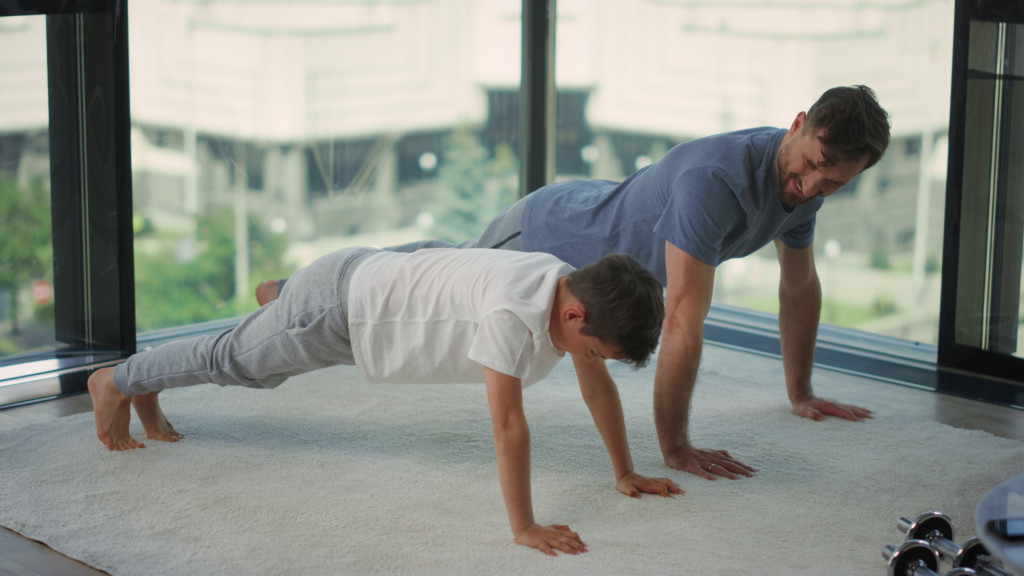- Encourage physical activity in children by making it fun and enjoyable.
- Set a good example for your child by leading an active lifestyle yourself.
- Limit screen time to promote more physical activities instead.
- Provide your child with a variety of options to discover their own interests.
- Consider incorporating contemporary dance classes as a creative way to stay active.
Encouraging physical activity in children is crucial for their overall well-being and development. In today’s fast-paced world, where electronic devices often precede physical play, parents must actively promote and engage their children in regular exercise. Physical activity improves physical health and enhances mental and emotional well-being. Here are five effective tips to encourage physical activity in your child.
1. Make it Fun and Enjoyable
Children are more likely to engage in physical activity if it is fun. Incorporate activities that your child finds interesting and exciting. By making physical activity enjoyable, you will encourage your child to engage in it and foster a lifelong love for being active.
Here are some tips on how to make it fun:
Use Props and Equipment
Consider incorporating various props and equipment into your child’s playtime to make physical activity more exciting. Simple items like balls, skipping ropes, and hula hoops can significantly enhance the fun factor and stimulate your child’s interest in being active. You can organize mini-sports competitions at home or in a local park to keep your child entertained and foster a healthy spirit of competition and teamwork.
Incorporate Technology

In today’s digital age, technology can be a powerful tool to encourage physical activity. Applications and video games that promote movement, such as dance-off games or virtual reality sports games, can make exercising feel more like play than work for your child. In addition, fitness trackers designed for children can turn steps and active minutes into a fun challenge that motivates them to move more.
Set Achievable Goals
Setting achievable goals can make physical activity more engaging for children. For example, you could aim to ride a bike without training wheels or mastering a new dance routine. Celebrating these milestones will make your child feel accomplished and inspire them to keep pushing their limits.
Make Exercise a Family Affair
Finally, make physical activity a family affair. Participate in activities together as a family, whether going on a bike ride, playing a game of basketball, or even doing a workout video together. When children see their parents valuing and enjoying physical activity, it sets a strong example for them to follow.
2. Set a Good Example
Children often learn by observing and imitating their parents or caregivers. It is, therefore, important for you to set a good example by leading an active lifestyle yourself. Engage in regular exercise and make it a part of your daily routine. Whether going for a jog, attending fitness classes, or practicing yoga, let your child witness your commitment to staying physically fit. Children who see their role models prioritizing physical activity are more likely to follow suit.
Furthermore, involve the whole family in physical activities like bike rides, hikes, or playing sports together. This strengthens family bonds and creates a supportive environment for your child to develop a positive attitude toward physical activity.
3. Limit Screen Time

Excessive screen time is one of the biggest barriers to physical activity in children. Establishing explicit limits on your child’s screen time, including watching television, playing video games, or using electronic devices, is crucial. Encourage them to engage in other activities, such as playing outdoors, reading books, or participating in sports.
Make screen-free zones in your home, such as bedrooms and mealtime areas, to discourage sedentary behavior. Consider implementing a screen-time schedule that allows for limited and supervised use of electronic devices, ensuring that physical activity remains a priority.
4. Provide a Variety of Options
Children have different interests and preferences when it comes to physical activities. Providing various options ensures your child finds something they enjoy and are likelier to stick with. Explore different sports, dance classes, martial arts, or swimming lessons to discover what resonates with your child.
Encourage your child to try new activities and support their interests by enrolling them in classes or clubs that cater to their preferences. Exposing your child to a wide range of physical activities, you help them discover their passion and foster a sense of exploration and curiosity.
5. Give Dance a Try
Dance is an excellent form of physical activity that has many benefits. Not only does it help increase your child’s flexibility and motor coordination, but it also encourages imaginative play and builds confidence.
Contemporary dance is especially popular among children, encouraging creative self-expression and allowing for individual interpretation. Try enrolling your child in contemporary dance classes and watch them grow in skill, technique, and imagination! These dance classes will also help to develop physical coordination, strength, and confidence. Who knows, you may have a future star on your hands!
In Summary
Encouraging physical activity in children is vital for their overall development and well-being. By making physical activity enjoyable, setting a good example, limiting screen time, providing various options, and considering contemporary dance classes, you can inspire your child to lead an active and healthy lifestyle. Remember, the key lies in creating a positive and supportive environment where physical activity becomes a natural and enjoyable part of their daily routine. So get started today and watch your child flourish both physically and mentally!

